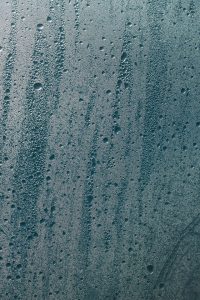It won’t be an exaggeration to state that mold is a silent intruder. It could be living in your home or office. And the worst part is that you don’t even know about it.
You may find out after the damage. Mold can wreak havoc and cause serious damage to your property and health. With over 200,000 species of mold, this living organism thrives in hidden corners.
But don’t worry. There are some signs that you can identify for early mold detection. If you take timely action, you can avoid a major hassle.
Sneaky Signs of Mold Presence
Musty Odor
Have you been questioning the source of a persistent musty odor? It could be indicative of a mold infestation. This unpleasant smell is a direct result of mold-emitting VOCs. It is a volatile organic compound. This is a diverse group of carbon-based chemicals.
They evaporate into the air at room temperature. When mold consumes organic materials, it releases VOCs as byproducts. Organic materials may include:
- Wood
- Paper
Other cellulose-based substances
The specific composition of VOCs emitted by mold is variable. It depends on the type of mold species present. The most common VOCs associated with mold include:
- Aldehydes
- Alcohols
- Ketones
- Microbial volatile organic compounds (mVOCs)
These compounds contribute to the characteristic musty, earthy, or stale smell. It permeates the air in mold-affected areas.
It’s most common in damp spaces- particularly those with a history of water damage. Indeed, the unpleasant odor serves as a clear signal of potential mold growth.
Visible Mold Growth
The visibility of mold is one of the most conspicuous signs of its presence. Mold comes in various colors. The most common manifestations are:
- Black
- Green
- Brown
These colors may be indicative of different species of mold. Each species of mold has unique characteristics. And hence, potential health risks.
Mold can also manifest in various textures. It can appear either fuzzy or slimy. The fuzzy texture is often associated with molds like:
- Aspergillus
- Penicillium
Slimy textured mold is often Stachybotrys. It is the black mold. It is important to identify the specific type of mold. This helps:
- Take appropriate remediation measures.
- Understand potential health implications.
Moreover, common areas prone to mold growth include:
- Bathrooms
- Kitchens
- Basements
Hidden spaces like those behind furniture, under carpets, and inside closets.
Bathrooms are susceptible to moisture. Basements lack ventilation. Hence, they are at risk, too.
So, if you have had water damage earlier, check these common areas for mold presence.
Water Stains and Discoloration
Water stains & discoloration on walls are signs of mold. These are often visible manifestations. They show underlying moisture issues. Hence, they serve as crucial indicators of potential mold growth.
These stains result from water intrusion due to:
- Leaks
- Plumbing issues
- Structural deficiencies
When moisture permeates building materials, it makes an ideal environment for mold. Discoloration in moist areas is particularly alarming. It signifies that conditions are ideal for mold colonization.
Mold spores in the air and on surfaces need moisture to germinate and thrive. Water infiltrates porous materials like
- Drywall
- Ceiling tiles
It provides the necessary sustenance for mold to flourish.
So, prompt investigation into the source of water stains is imperative. This prevents the escalation of mold-related problems. You must identify and address the cause of water intrusion, such as:
- Fixing leaks
- Improving ventilation
Homeowners can disrupt the mold growth cycle by tackling the moisture issue early on.
Peeling or Warping Surfaces
Peeling or warping surfaces within a home can show an underlying moisture issue. It is a prime condition for mold proliferation. Mold thrives in damp environments. Therefore, maintaining an indoor humidity level below 60% is crucial to inhibit its growth.
When humidity surpasses this threshold, it becomes dangerous. It is imperative to investigate potential sources of excess moisture and look for signs of mold.
Peeling or warping occurs in areas where moisture has compromised the integrity of building materials. Walls, flooring materials, and ceilings are particularly vulnerable to these effects. The peeling or warping results from water absorption. This further causes materials to lose structural stability.
Health Symptoms
Mold doesn’t only affect your home; it can also impact your health. Respiratory issues, allergies, and skin irritation may arise when inhaled. If you experience unexplained health symptoms, there is a possibility of hidden mold.
Condensation
Condensation the visible accumulation of water droplets on surfaces like:
- Windows
- Pipes
- Walls
It is a telltale sign of excessive moisture in the air. This phenomenon results when humid, warm air comes into contact with any cool surface. It causes the air to release moisture through tiny water droplets.
The presence of condensation is an issue. This is because it indicates a disparity in temperature and humidity levels. Hence, creating conditions conducive to mold growth.
When moisture-laden air encounters surfaces with temperatures below the dew point, condensation occurs. This moisture creates a fertile breeding ground for mold spores, especially in poor ventilation or insulation areas.
Unchecked condensation fosters mold development. It poses risks to:
- Structural integrity
- Indoor air quality.
Wrapping Up
Recognizing the early signs of mold growth is crucial. This keeps a small problem from becoming a major hassle. By addressing moisture issues, you can avoid mold.
So, if you spot a big mold infestation issue, call the experts. At NYWaterDamage911, we specialize in mold remediation services. We can help eliminate mold and ensure your indoor environment is healthy. Call us today.
Detecting mold early is vital, but addressing fire damage requires specialized expertise to fully restore affected areas. Our fire damage restoration experts in New York are equipped to manage even the most challenging cases, ensuring safety and a thorough return to pre-damage conditions.
Early detection of mold infestation is vital for maintaining a healthy living environment. If you notice signs of mold growth, it’s crucial to address the issue promptly to prevent further damage. Our mold remediation experts in Asharoken are trained to identify and eliminate mold effectively, ensuring your home remains safe and clean. Discover how our specialized services can help you combat mold and restore your property.
Mold can lead to various health issues, ranging from respiratory problems to allergic reactions. To learn more about this critical topic, explore 7 ways mold can impact your health. Being informed about the potential dangers of mold can empower you to take preventive actions and seek timely remediation when needed.
Our detailed guide on mold remediation in HVAC systems provides essential information on how to identify and eliminate mold, ensuring your system operates efficiently and safely. Don’t overlook this important aspect of home maintenance—read more to protect your space from mold-related issues.




